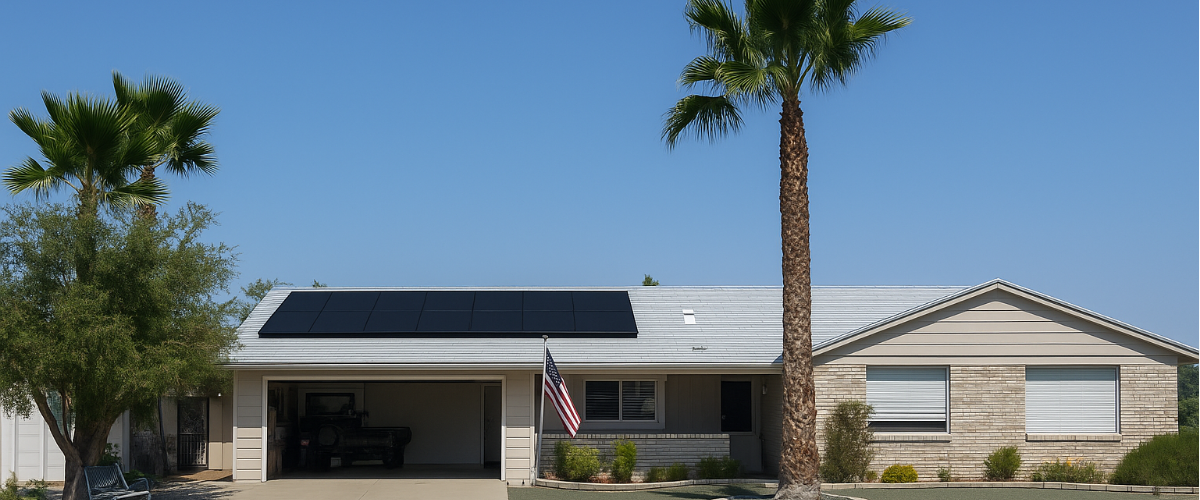Understanding Residential Solar System Sizes

Solar and Roofing Advisor
A simple guide to understanding solar system sizes for California homes. Discover how to pick the right size to save money and maximize efficiency.

As the demand for renewable energy continues to rise, many California homeowners are considering solar energy as a sustainable solution. One of the key factors to consider when installing solar panels is the appropriate solar system size for your home. This guide will explore various aspects of solar system sizes, including their benefits, examples, and practical applications.
Understanding Solar System Sizes
Solar system sizes refer to the capacity of a solar panel installation to generate electricity, typically measured in kilowatts (kW). Choosing the right size is crucial for optimizing energy efficiency and ensuring that your home’s energy needs are met.
• Small Systems (1-3 kW): Ideal for small homes or for those who want to supplement their energy usage with solar power.
• Medium Systems (4-7 kW): Suitable for average-sized homes, these systems can significantly reduce electricity bills.
• Large Systems (8+ kW): Designed for large homes or properties with high energy demands, these systems can often cover most, if not all, of a household's electricity needs.
Solar System Sizes Benefits
Choosing the right solar system size offers numerous benefits:
• Cost Savings: By selecting a system that matches your energy consumption, you can maximize savings on your electricity bills.
• Environmental Impact: Larger systems can significantly reduce your carbon footprint by decreasing reliance on non-renewable energy sources.
• Property Value: Homes equipped with appropriately sized solar systems often see an increase in property value.
Solar System Sizes Examples
To better understand solar system sizes, let's look at some practical examples:
• Example 1: Small Urban Home: A 2 kW system might be sufficient for a small urban home with minimal energy usage.
• Example 2: Suburban Family Home: A 5 kW system could be ideal for a typical suburban family home, balancing cost and energy needs.
• Example 3: Large Rural Estate: An 8 kW or larger system would suit a large rural estate with high energy demands, possibly including electric vehicle charging.
Choosing the Right Solar System Size for Your Home
When selecting a solar system size, consider the following factors:
• Energy Consumption: Review past electricity bills to determine your average energy usage.
• Roof Space: Ensure your roof can accommodate the number of panels required for your desired system size.
• Budget: Larger systems can be more expensive upfront, so balance your budget with potential long-term savings.
• Future Needs: Consider any future energy needs, such as electric vehicles or home expansions.
Consulting with a professional solar provider can help you determine the best system size for your specific situation.
In conclusion, selecting the right solar system size is a critical step in transitioning to solar energy. It ensures that your energy needs are met efficiently while maximizing financial and environmental benefits. By understanding your energy consumption and evaluating your property’s capabilities, you can make an informed decision.
For those interested in exploring solar energy solutions further, consider reaching out to US Power. As a leading energy solutions provider, US Power can help tailor a solar system that meets your unique needs and contributes to a sustainable future.
Related Articles
Our Related Blogs
Learn how US Power installs solar efficiently without compromising quality.
Discover how Qcells’ perovskite solar tech could redefine energy in California.
Qcells beats Tesla in California—higher efficiency, local service, and U.S.-made.
Our Solar and Roof Brand Partners








We empower communities and businesses to harness clean, renewable solar energy solutions that drive sustainable growth.
Ready to Own Your Power? Call us today!
818-650-8010
Copyright © 2025 US Power - Axia by QCells. All Rights Reserved.
Privacy is important to us, so you have the option of disabling certain types of storage that may not be necessary for the basic functioning of the website. Blocking categories may impact your experience on the website.
Essential
These items are required to enable basic website functionality.
Personalization
These items allow the website to remember choices you make (such as your user name, language, or the region you are in) and provide enhanced, more personal features.
Marketing
These items are used to deliver advertising that is more relevant to you and your interests.
Analytics
These items help the website operator understand how its website performs, how visitors interact with the site, and whether there may be technical issues.
We and our third-party partners use cookies and other technologies to enhance and track your experience on this site, conduct analytics, and personalize marketing to you. By using the site, you agree to our use of these technologies, including recording and monitoring your interactions with the site.
Get an instant solar estimate using satellite!









